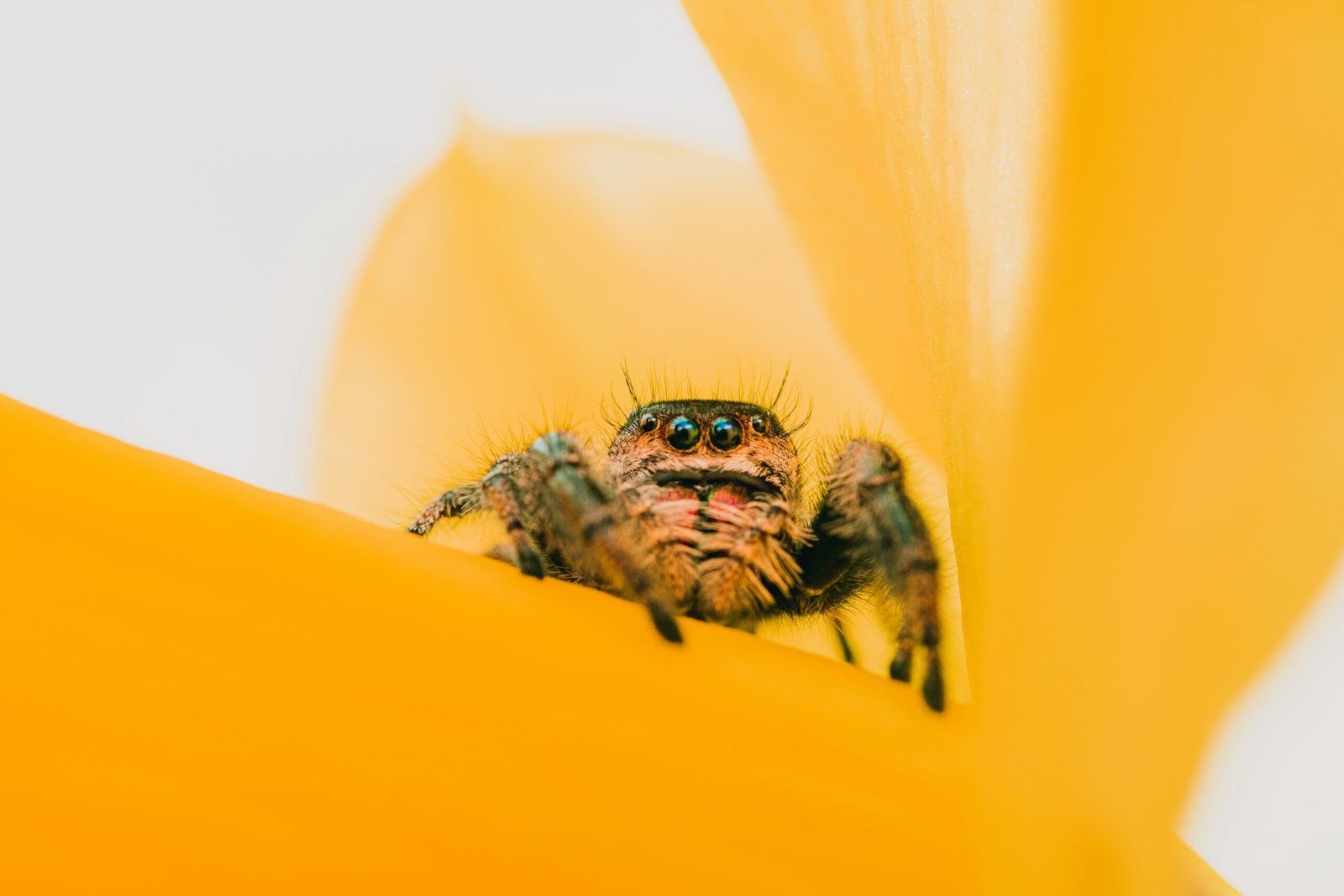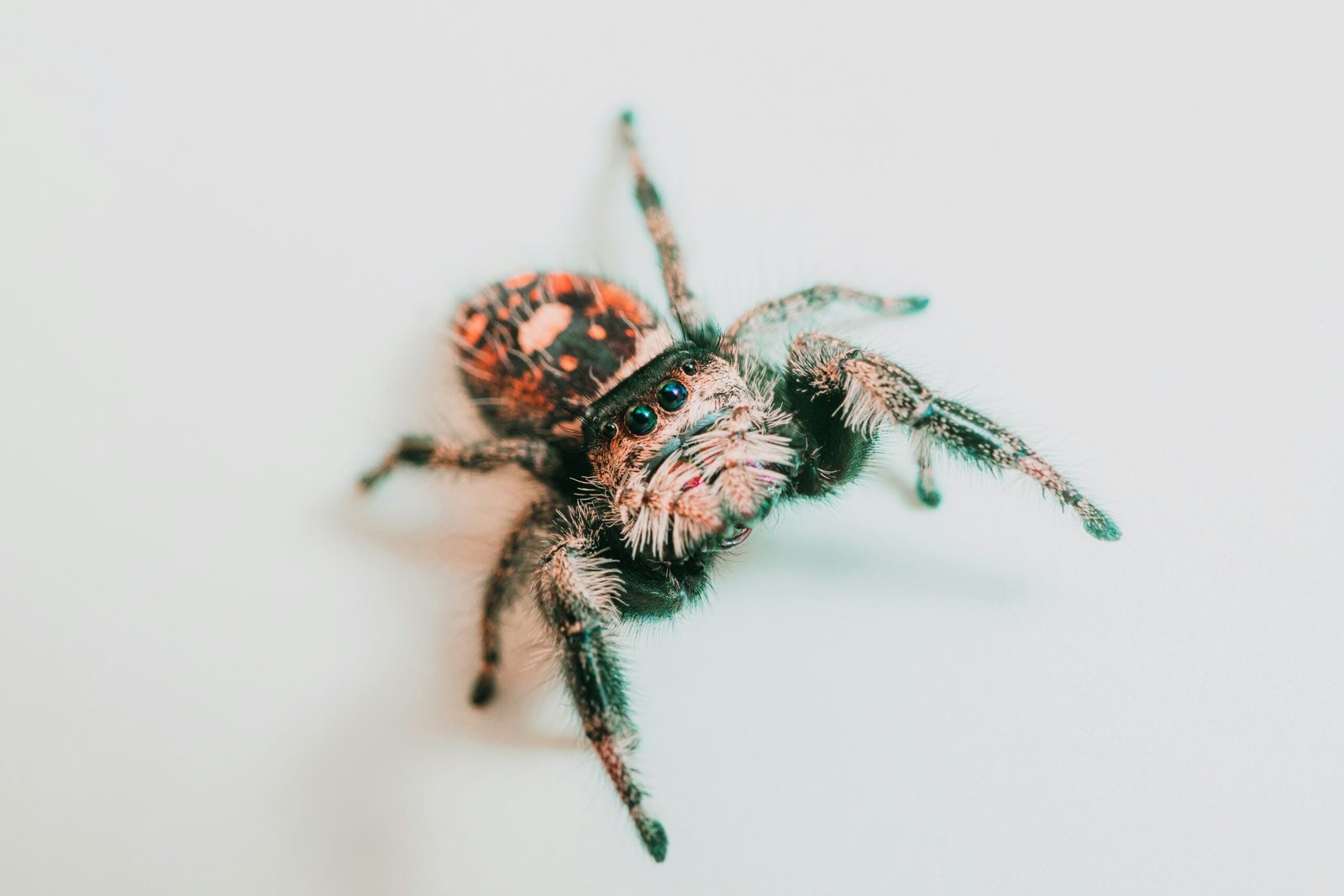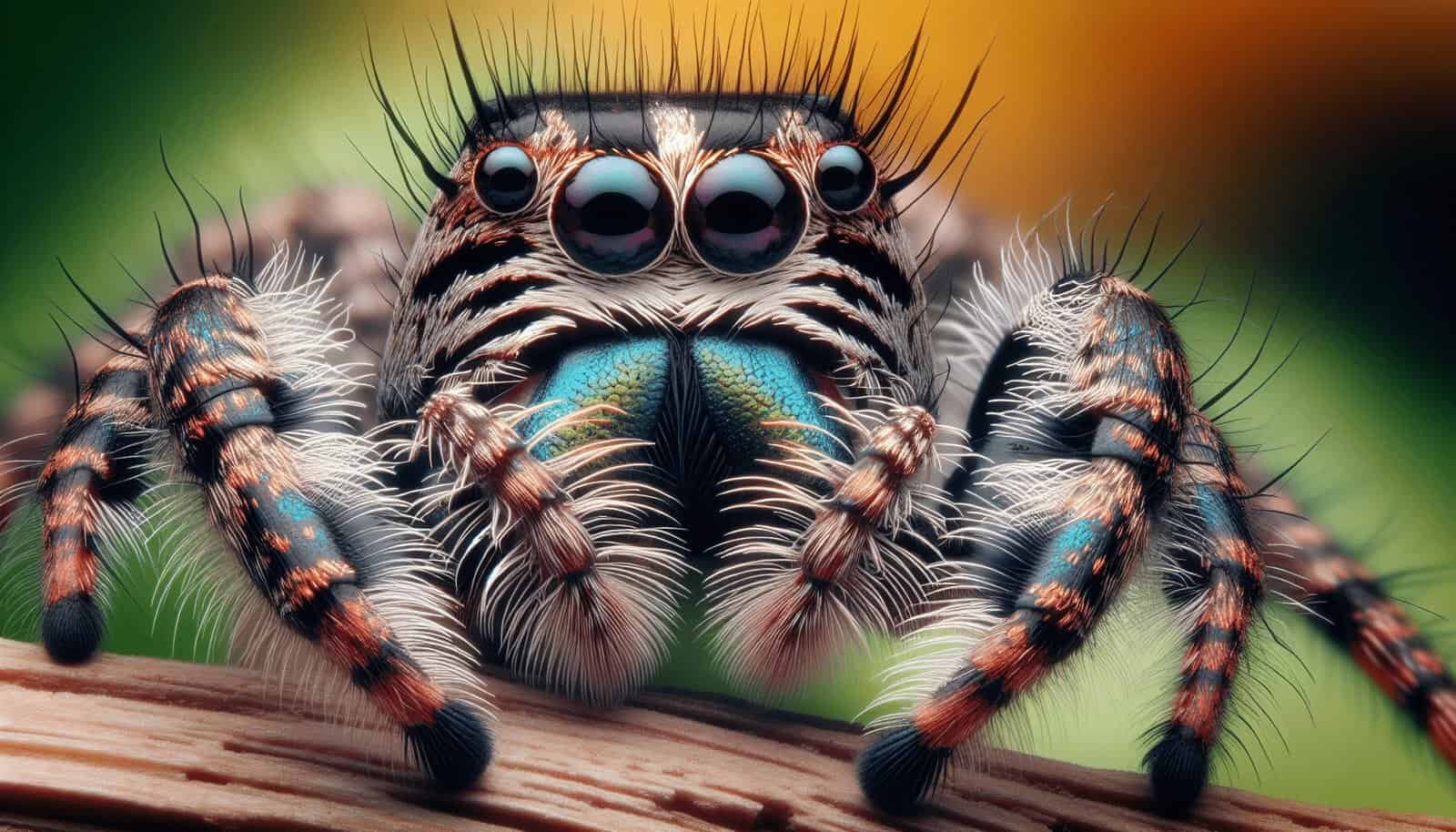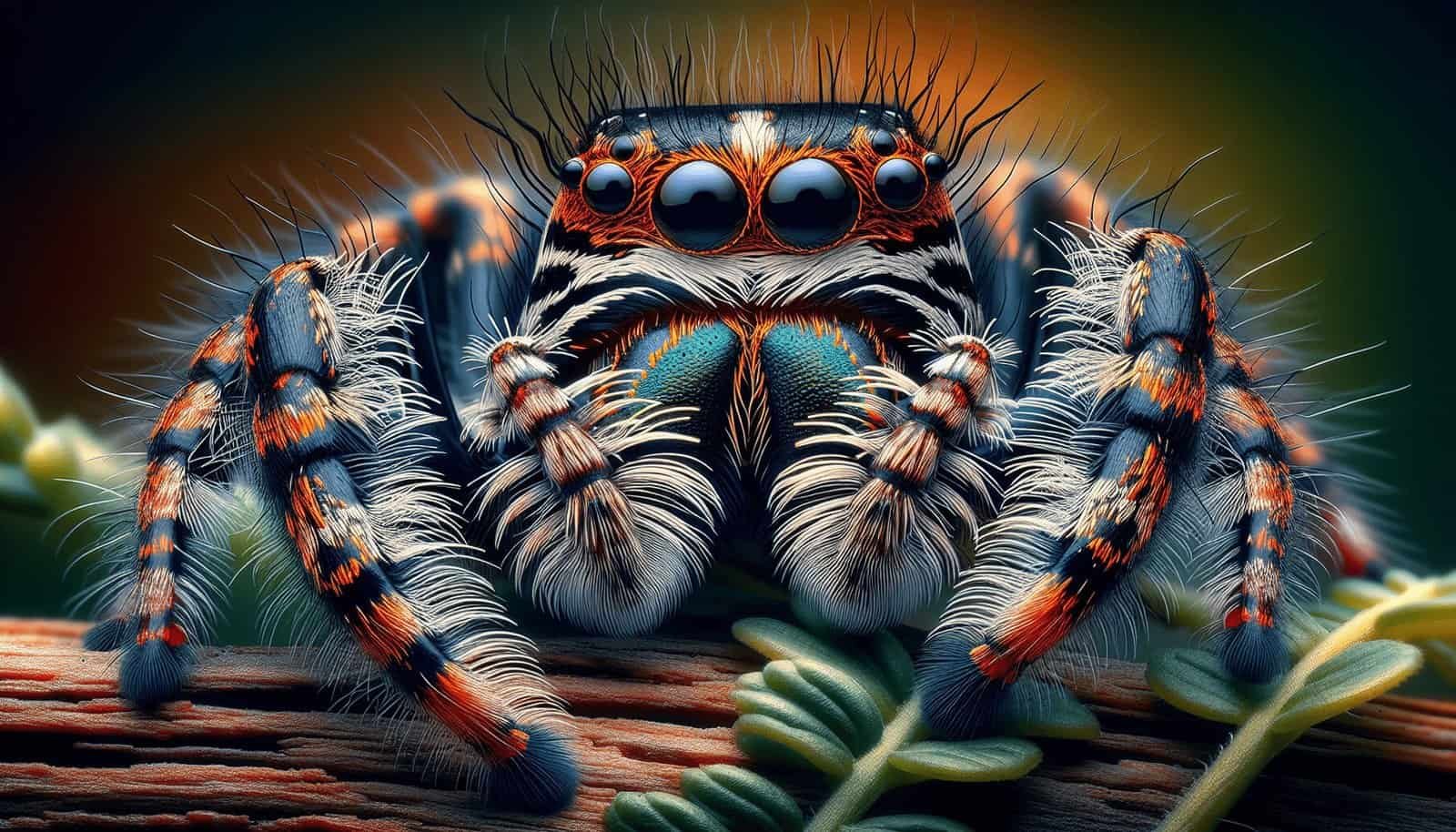Discover the captivating world of the Regal Jumping Spider, a creature known for its vibrant colors, curious nature, and impressive agility. In this article, you’ll explore the unique behaviors that make this spider stand out, including its exceptional hunting techniques and surprisingly interactive personality. You’ll also learn essential tips for caring for these fascinating spiders in captivity, ensuring they thrive in a comfortable and stimulating environment. By the end, you’ll be equipped with the knowledge to better understand and appreciate the marvelous traits and care requirements of these intriguing arachnids. Enjoy diving into the world of the Regal Jumping Spider! Have you ever wondered about the intriguing world of the Regal Jumping Spider? These little acrobats of the arachnid world are not only fascinating to watch but also make for unusual and rewarding pets. Whether you’re a seasoned spider enthusiast or a curious newcomer, understanding the behavioral traits and care requirements of these remarkable creatures can help you create a thriving environment for them in captivity.

Understanding the Regal Jumping Spider
An Introduction to the Regal Jumping Spider
The Regal Jumping Spider, scientifically known as Phidippus regius, is a species of jumping spider commonly found in the southeastern United States and the Bahamas. Known for its vibrant colors, keen vision, and incredible jumping abilities, this spider has become a favorite among arachnid enthusiasts.
Physical Characteristics
Regal Jumping Spiders are relatively small, with adult females typically measuring around 0.4 to 0.6 inches in body length and males being slightly smaller. Despite their size, they are strikingly beautiful, often boasting iridescent colors and intricate patterns on their bodies.
| Feature | Description |
|---|---|
| Size | Females: 0.4 – 0.6 inches; Males: slightly smaller |
| Color | Varies from gray, black, and brown to iridescent hues of blue, green, and orange |
| Eyes | Eight eyes in total; two large central eyes provide excellent depth perception and vision |
| Legs | Strong, muscular legs adapted for jumping; covered in sensory hairs that detect vibrations and chemicals |
Natural Habitat
In the wild, Regal Jumping Spiders inhabit a variety of environments ranging from forests to grasslands. They are often found on plants, tree trunks, and even buildings where they hunt for prey and build their nests.
Behavioral Traits of the Regal Jumping Spider
Keen Vision and Hunting Skills
One of the most remarkable traits of the Regal Jumping Spider is its keen vision. Unlike many spiders that rely heavily on their sense of touch and vibrations, these spiders have excellent eyesight, which they use to stalk and hunt their prey. Their two large central eyes provide excellent depth perception, allowing them to judge distances accurately and leap onto their prey with precision.
Jumping Abilities
As their name suggests, jumping spiders are excellent jumpers. They can leap several times their body length, which they do to pounce on prey or escape predators. Their jumps are powered by a unique hydraulic system within their legs, rather than by muscles alone.
Complex Courtship Rituals
Regal Jumping Spiders also exhibit fascinating courtship behaviors. Males perform elaborate dances to attract females, often waving their legs and palps, and displaying their colorful bodies. These displays not only attract females but also help to distinguish between different species and avoid inter-species mating.
Curiosity and Intelligence
These spiders are known for their curiosity. They often turn to look at moving objects and may even follow your movements when you observe them closely. This trait, combined with their active hunting behavior, makes them very engaging pets to watch.

Caring for Regal Jumping Spiders in Captivity
Setting Up the Enclosure
Creating a suitable habitat for your Regal Jumping Spider is crucial for its well-being. Here are the key components to consider:
| Component | Description |
|---|---|
| Enclosure Size | A small terrarium or tank, around 5 to 10 gallons, is sufficient for one spider. Ensure it is escape-proof with a secure lid. |
| Substrate | Use a substrate that retains humidity but also allows for good drainage, such as coconut fiber or peat moss. |
| Decorations | Add plenty of foliage, twigs, and rocks to provide climbing surfaces and hiding spots. |
| Lighting | Natural light from a window is usually sufficient. Avoid direct sunlight as it can overheat the enclosure. |
| Humidity and Temperature | Maintain humidity levels around 60-70%. Room temperature (70-80°F) is adequate, but you may need a heat source if your home is particularly cool. |
Feeding and Nutrition
Regal Jumping Spiders are carnivorous and primarily eat insects. In captivity, you can feed them a variety of live prey.
| Prey Options | Frequency |
|---|---|
| Fruit Flies | Ideal for spiderlings and small juveniles; can be fed daily or every other day. |
| Crickets | Suitable for adults; offer 2-3 times a week. |
| Mealworms | Can be given occasionally as part of a varied diet. |
| Moths and Flies | Great for encouraging natural hunting behavior; offer as occasional treats. |
Ensure prey is appropriately sized to prevent injury to the spider. Remove any uneaten prey after 24 hours to prevent the buildup of bacteria and mold.
Hydration
While Regal Jumping Spiders get most of their hydration from their prey, it’s still important to provide them with a water source. You can mist the enclosure lightly every few days to maintain humidity and provide droplets for them to drink. Avoid over-misting, as excessive moisture can lead to mold growth and respiratory issues.
Molting
Like all arachnids, Regal Jumping Spiders go through a molting process as they grow. During this time, they are vulnerable and may refuse food. It’s essential to provide a quiet, stress-free environment during molting. Ensure that the enclosure has ample hiding places where your spider can retreat and feel safe.
Handling
While not necessary, some keepers enjoy handling their Regal Jumping Spiders. If you choose to do so, be gentle and careful. These spiders are tiny and can be injured easily. Allow the spider to climb onto your hand voluntarily and avoid making sudden movements that could startle it.

Common Health Issues and How to Address Them
Recognizing Health Problems
Maintaining the health of your Regal Jumping Spider involves regular observation and an understanding of common issues that may arise.
| Health Issue | Symptoms | Treatment |
|---|---|---|
| Dehydration | Shrivelled abdomen, lethargy | Increase humidity and offer water droplets. Ensure fresh prey is available. |
| Mites | Tiny white or red specks moving on the spider or in the enclosure | Clean the enclosure thoroughly, remove infested substrate, and monitor closely. |
| Incomplete Molt | Spider appears stuck in its old exoskeleton | Increase humidity slightly and provide a safe, humid hide. Do not attempt to remove the old exoskeleton manually. |
| Parasites | Unusual behavior, visible parasites | Isolate the spider and consult a veterinarian experienced with invertebrates. |
Preventative Care
To prevent health issues, maintain a clean and stable environment for your spider.
- Regular Cleaning: Clean the enclosure regularly to prevent mold and bacteria buildup.
- Stable Conditions: Keep humidity and temperature levels within the recommended range.
- Monitoring: Observe your spider daily for any changes in behavior or appearance.

Breeding Regal Jumping Spiders
Preparing for Breeding
Breeding Regal Jumping Spiders can be a rewarding experience but requires careful preparation.
| Step | Description |
|---|---|
| Selecting Mates | Choose healthy, mature spiders. Introducing them in a neutral enclosure can help reduce territorial behavior. |
| Courtship Observance | Watch for successful courtship behaviors, such as male dancing and female receptiveness. |
| Post-Mating Care | Remove the male after mating to prevent potential aggression from the female. |
| Egg Sac Care | Provide a safe, undisturbed area for the female to lay her egg sac. Maintain appropriate humidity and temperature levels. |
Raising Spiderlings
Once the egg sac hatches, you’ll be dealing with numerous tiny spiderlings. Here’s how to care for them:
| Requirement | Details |
|---|---|
| Enclosure | Use a larger, well-ventilated container or multiple small containers to house spiderlings. |
| Food | Offer tiny prey items like fruit flies. Ensure prey size is appropriate to avoid overwhelming the spiderlings. |
| Hydration | Lightly mist the enclosure to provide necessary humidity and water droplets. |
| Separation | As spiderlings grow, consider separating them to prevent cannibalism and overcrowding. |
Caring for spiderlings can be time-consuming but seeing them grow into mature spiders is incredibly rewarding.

Final Thoughts
Whether you’re captivated by their acrobatic jumps, keen vision, or complex courtship rituals, Regal Jumping Spiders are truly remarkable creatures. Caring for them in captivity can be a fulfilling hobby that brings you closer to the wonders of the natural world. By understanding their behavioral traits and providing a suitable environment, you can enjoy watching these impressive spiders thrive in your own home.
So why not take the plunge and invite a Regal Jumping Spider into your life? With a bit of knowledge and care, you’ll be rewarded with a fascinating and engaging companion.
Got more questions or experiences to share? Feel free to drop a comment below. Happy spider keeping!